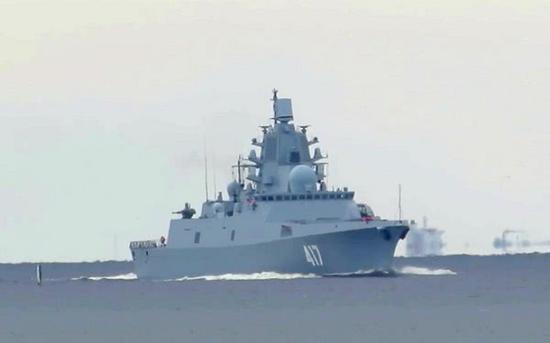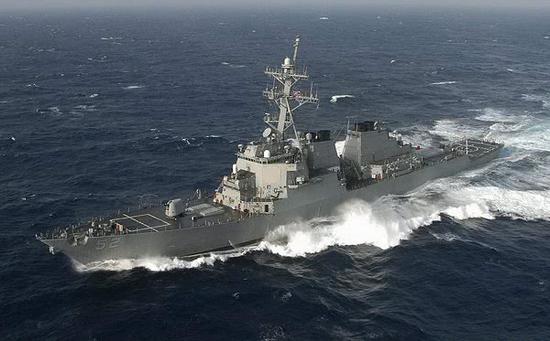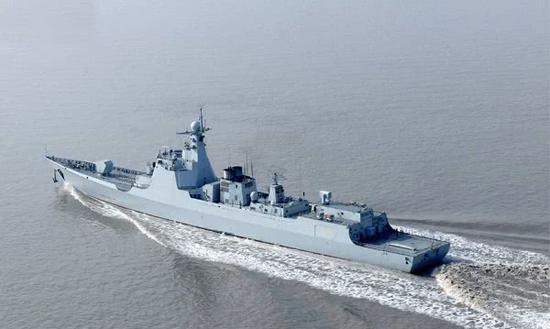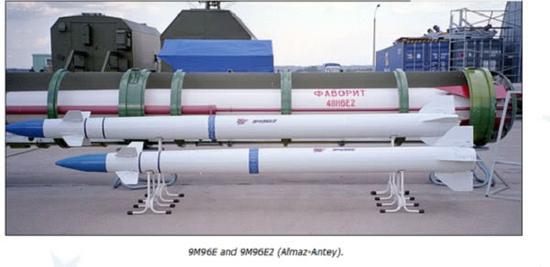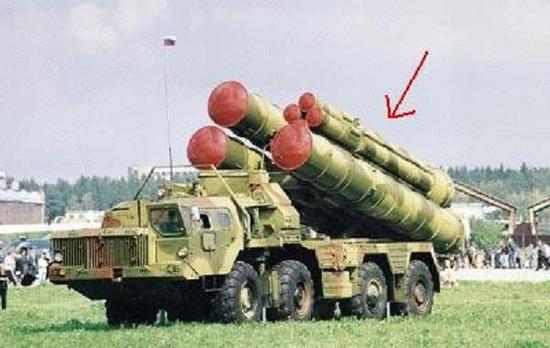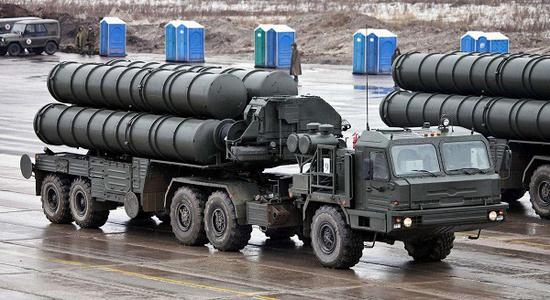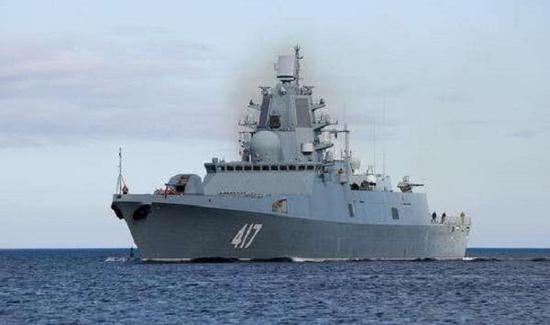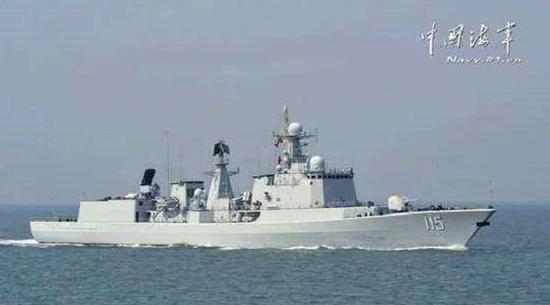http://mil.news.sina.com.cn/2018-06-28/doc-iheqpwqy1467748.shtml
俄媒建议俄罗斯从中国买航母 可为俄节省数十年时间
2018年06月28日 14:26 参考消息
0
参考消息网6月28日报道 俄罗斯自由媒体网站6月26日刊登题为《俄罗斯造不出航母并求中国帮忙》的文章,作者是谢尔盖·伊先科。全文摘编如下:
美国《国家利益》双月刊网站曝出惊人消息:俄罗斯或将被迫从中国购买航母。军事专家罗伯特·法利认为,北京出于中俄密切政治关系考量,将向莫斯科提供特别优惠以推动这项交易。该网站称,中国造船企业计划2025年前拥有至少四个完整的航母战斗群。若中国用同样速度为俄罗斯造航母,那么美国海军很快就将在世界大洋上感受到拥挤。
中国造舰水平的进步不久前再次得到证明,今年5月,2013年开造、2017年下水的中国第二艘航母001A型结束海试,比原计划大幅提前。001A(002)型航母尽管是中国首艘航母辽宁舰的改进型号,但它并非后者的简单翻版,其使用舰载机的能力大幅增强。
不过最令人吃惊的是,001A型航母的建造速度超过俄罗斯和美国的想象,它将于今年年底前进入海军服役。
与此同时,中国002(003)型航母已在上海开始建造。
002(003)型航母的开建表明,中国航母建造进入全新阶段。西方媒体报道称,该航母将配备电磁弹射装置。除中美之外,世界上没有其他国家拥有这项技术。
从各方面看,俄罗斯在航母建造方面落后中国和美国不止一代。现在的确应当作出决断:要么投资数十亿美元追赶遥遥领先的技术领头国家,要么从它们那里购买我们做不成的东西,当然卖家只能是中国而非美国。价钱未必便宜,但肯定能让俄罗斯在现代海军建设上节省数十年时间。
显然,第二种方案将沉重打击俄罗斯的民族自尊。半个世纪以来,苏联及其继承者俄罗斯一直将中国视为主要武器买家。但现在外国人认为,莫斯科将被迫公开承认:中国人在军舰制造方面已超过自己的老师,俄罗斯将支付数十亿美元购买上海和大连制造的军舰。我们该选择哪条道路?
如果我们自己建造新航母,这将有力推动本国的造船等行业发展。但可笑的是,我国造船厂能顺利向海军交付的只有小型导弹艇和轻护航舰。尽管武器配备不错,但它们排水量小,航行性能有限,不适合远洋行动。护卫舰方面情况也不好,22350型首舰“戈尔什科夫海军元帅号”至今仍未交付海军。
在目前的惨淡背景下,我们若开始着手建造航母,未来何时能看到成果?一个月前,有消息称联合造船公司今年底将向国防部提交未来航母的多个设计方案。如果其中有可行方案,2019年将开始技术设计和设计图纸准备。新航母或于2021年开造,工期不少于10年。开工所需资金已列入2027年前国家装备计划。
这样看来,俄罗斯要获得航母最快也将在2030年之后。
如果自造航母,我们将落在世界造舰工业后面,因为俄新航母上不会有耗能巨大的电磁弹射装置。如果没有弹射装置,航母就无法配备重型远程预警机。
或许俄罗斯真的应该购买中国航母?如果放得下面子,是不是该开始与北京讨价还价了呢?(编译/刘洋)
Russian media advises Russia to buy aircraft carriers from China to save Russia for decades
June 28, 2018 14:26 References
0
According to a news network report on June 28, the Russian free media website published an article titled "Russia Cannot Make Carriers and Ask China for Help" on June 26th. The author is Sergey Ishchenko. The full text is extracted as follows:
The U.S. "National Interest" bimonthly Web site has exposed staggering news: Russia may be forced to buy aircraft carriers from China. Military expert Robert Farley believes that due to the close political relations between China and Russia, Beijing will offer special concessions to Moscow to promote the deal. The site stated that Chinese shipbuilding companies plan to have at least four complete aircraft carrier battle groups by 2025. If China uses the same speed to build aircraft carriers for Russia, then the US Navy will soon feel congested in the world ocean.
The progress of China’s shipbuilding level has recently been proved again. In May of this year, the 710A, China’s second aircraft carrier that was launched in 2013 and launched in 2017, ended the sea trial, which was significantly ahead of schedule. Although the 001A (002) aircraft carrier is an improved model of China's first aircraft carrier, the Liaoning Ship, it is not a simple copy of the latter, and its ability to use carrier aircraft has been greatly enhanced.
However, what is most surprising is that the construction speed of the 001A aircraft carrier has exceeded the imagination of Russia and the United States. It will enter the Navy before the end of this year.
At the same time, China’s 002(003) aircraft carrier has begun construction in Shanghai.
The opening of the 002 (003) type aircraft carrier shows that China's aircraft carrier construction has entered a new phase. Western media reported that the aircraft carrier will be equipped with electromagnetic catapult devices. With the exception of China and the United States, no other country in the world owns this technology.
From all perspectives, Russia lags behind China and the United States in aircraft carrier construction. It is indeed time to make a decision: either invest billions of dollars to catch up with leading technology leaders, or buy from them what we cannot do. Of course, the seller can only be China rather than the United States. The price may not be cheap, but it will certainly allow Russia to save decades in modern naval construction.
Obviously, the second option will be a heavy blow to Russia's national self-esteem. For half a century, the Soviet Union and its successor Russia have always viewed China as a major weapon buyer. But foreigners now believe that Moscow will be compelled to publicly admit: The Chinese have surpassed their teachers in the manufacture of warships, and Russia will pay billions of dollars to buy warships made in Shanghai and Dalian. Which road should we choose?
If we build new aircraft carriers ourselves, this will effectively promote the development of our shipbuilding and other industries. It is ridiculous that only small missile boats and light escorts can be successfully delivered to the Navy by our shipyards. Although the weapons are well equipped, they have small displacement and limited navigational performance and are not suitable for ocean operations. The condition of the frigates is also not good, and the Type 22350 first ship "Marshal Gorshikov" has not yet been delivered to the Navy.
In the present bleak background, if we begin to build aircraft carriers, when will we see results in the future? A month ago, it was reported that United Shipbuilding Corporation will submit multiple design proposals for future aircraft carriers to the Ministry of Defense at the end of this year. If there is a feasible plan, technical design and design drawings will be prepared in 2019. The new aircraft carrier may be opened in 2021 and the construction period will be no less than 10 years. The funds needed to start construction have been included in the national equipment plan before 2027.
It seems that Russia will get the fastest aircraft carrier after 2030.
If we build our own aircraft carrier, we will fall behind the world's shipbuilding industry because there will be no energy-consuming electromagnetic catapult devices on the Russian new aircraft carrier. If there is no catapult, the aircraft carrier cannot be equipped with heavy-duty long-range early-warning aircraft.
Maybe Russia really should buy a Chinese aircraft carrier? If you let it go, is it time to start bargaining with Beijing? (Compiled/Liu Yang)
https://www.yahoo.com/news/could-china-turn-russia-aircraft-132500030.html
Could China Turn Russia Into an Aircraft Carrier Superpower?

Robert Farley
,
The National Interest•June 7, 2018
Robert Farley
Security,

Or, build for Moscow some killer flattops?
Could China Turn Russia Into an Aircraft Carrier Superpower?
The only downside for China would be that a Russian carrier would take up space and industrial capacity in Chinese yards, but this is a small price to pay. The downsides for Russia are more palpable; an aircraft carrier purchased from China still costs money, and still requires a long-term investment in maintenance and modernization. Russian prestige might also take a hit; as Kofman suggests, “over time Russia will become more comfortable importing Chinese components, but this will take years to overcome pride and stigma. The Russian Navy, like most navies, suffers from its own megalomania and big ship dreams that budgets have to contain.” Gorenburg adds, “the visuals of Russia buying from China vs. selling to China would cement the image shift to junior partner.”
The Russian aircraft carrier Admiral Kuznetsov has entered what is expected to be a substantial refit. Its performance in a recent deployment off Syria was not adequate; in addition to engine problems, it suffered flight-deck issues that contributed to the loss of two fighters, a substantial portion of its flight group. The readiness of Kuznetsov has suffered across its entire career, in large part due to a lack of experience and maintenance funding. As it is already nearly thirty years old, it is unclear how much more service the Russian Navy can wring from the hull.
And yet there is little reason to hope for a replacement on the near horizon. Despite occasional claims that a new carrier will be laid down soon, serious design work has yet to begin. Moreover, in a time of defense austerity, Russia seems to be deemphasizing its surface fleet. It is not at all clear that Russia could build an aircraft carrier in a reasonable time frame even if it wanted to.
But, what if Russia decided to look elsewhere, as more than a few countries have done in the past? What if Russia decided to purchase an aircraft carrier from China?
Recommended: 5 Worst Guns Ever
http://nationalinterest.org/blog/the-buzz/could-china-build-aircraft-carriers-russia-25604
April 27, 2018 Topic: Security Region: Asia Blog Brand: The Buzz Tags: RussiaChinashipnavynavalAircraft CarrierMoscowBeijingMilitaryTechnology
Could China Build Aircraft Carriers for Russia?
Now that's an idea. Could it happen?
by Robert Farley
The Russian aircraft carrier Admiral Kuznetsov has entered what is expected to be a substantial refit. Its performance in a recent deployment off Syria was not adequate; in addition to engine problems, it suffered flight-deck issues that contributed to the loss of two fighters, a substantial portion of its flight group. The readiness of Kuznetsov has suffered across its entire career, in large part due to a lack of experience and maintenance funding. As it is already nearly thirty years old, it is unclear how much more service the Russian Navy can wring from the hull.
And yet there is little reason to hope for a replacement on the near horizon. Despite occasional claims that a new carrier will be laid down soon, serious design work has yet to begin. Moreover, in a time of defense austerity, Russia seems to be deemphasizing its surface fleet. It is not at all clear that Russia could build an aircraft carrier in a reasonable time frame even if it wanted to.
But, what if Russia decided to look elsewhere, as more than a few countries have done in the past? What if Russia decided to purchase an aircraft carrier from China?
Recommended: 5 Worst Guns Ever Made .
Recommended: The World’s Most Secretive Nuclear Weapons Program .
Recommended: The Fatal Flaw That Could Take Down an F-22 or F-35 .
Related
 China Is Building Another Aircraft Carrier (and It Could Be a Game Changer)
China Is Building Another Aircraft Carrier (and It Could Be a Game Changer)
 These Countries Will Have the Most Powerful Navies on the Planet (in 2030)
These Countries Will Have the Most Powerful Navies on the Planet (in 2030)
 Why Isn't Russia an Aircraft Carrier Superpower?
Why Isn't Russia an Aircraft Carrier Superpower?
Russian Shipbuilding Is a Disaster; Chinese Shipbuilding Is World-Beating
Russian shipbuilding is, at least as far as large surface ships are concerned, a complete mess. In the last decade and a half, Russia has largely reconstituted its ability to build submarines, as well as to construct small surface vessels. This has not, as yet, extended to the construction of large ships. The transfer of two Mistrals from France was intended to jumpstart the industry, as two additional ships would be constructed in Russian yards. However, the deal fell through and no clear plans for replacement have come to fruition. Even the reconstruction of INS Vikramaditya, intended in part to rebuild skills in carrier construction, ended half a decade ago.
The problem is exacerbated by the loss of Ukraine. All four Kiev-class carriers were built in Ukraine, as were the two Kuznetsov-class ships. Ukraine, of course, gained its independence with the dissolution of the Soviet Union, and while relations between the two countries remained cordial enough to continue defense-industrial cooperation until 2014, the annexation of Crimea ended that.
Chinese shipbuilding, on the other hand, has made tremendous strides over the past decade. Since 2007, China has launched six twenty-five-thousand-ton LPDs, seventeen seven-thousand-plus-ton destroyers, one thirteen-thousand-ton cruiser and, of course, a new aircraft carrier. China’s newest carrier, a half-sister to Liaoning and to the Russian Admiral Kuznetsov , will soon enter sea trials, a mere five years after being laid down. A new carrier, of indigenous design and displacing eighty-five thousand tons, has been under construction since 2016. China is also building a large, flat-decked amphibious assault carrier, displacing some forty thousand tons, and six additional cruisers.
In short, China has recent experience building large aviation warships, while Russia has no experience building a surface ship larger than a destroyer since the end of the Cold War.
Past Experience with Capital Ship Acquisition
There is nothing new or unusual about navies acquiring capital ships from foreign builders. During the dreadnought period, countries regularly ordered major vessels for construction from foreign yards; the United States, the UK and Germany each constructed battleships for navies in Europe, Asia and South America. In some cases, this included technology transfer and a kick-start for domestic shipbuilding, as was Japan’s intent in ordering battleships from British yards. In other cases, the buyer had no intention of ever constructing such vessels on its own. The trend continued after World War II, as the United States and the United Kingdom exported aircraft carriers to a variety of countries.
More recently, Russia reconstructed the carrier Baku and transferred it to India, where it became INS Vikramaditya. Ukraine transferred the incomplete hulk of the carrier Varyag to China, which rebuilt the ship and commissioned it as Liaoning . As noted above, Russia itself attempted to purchase a pair of assault carriers from France, seeking technology transfer and an industrial jumpstart. This transfer failed because of Russia’s annexation of Crimea.
Could It Happen?
Analysts are skeptical. According to CNA’s Michael Kofman, “the idea is not entirely crazy, it is simply that there is little discernible need for a carrier in the Russian navy. I don’t see any drive or desire to attain a new carrier in Russia. Russia has no practical need of a carrier, it is simply for symbolic purposes to project status. Its only practical mission is to sustain Russian naval aviation; that part of the service doesn’t want to die so they need a carrier. If the carrier goes then the naval aviation goes. As such the Kuznetsov does fine.”
April 27, 2018 Topic: Security Region: Asia Blog Brand: The Buzz Tags: RussiaChinashipnavynavalAircraft CarrierMoscowBeijingMilitaryTechnology
Could China Build Aircraft Carriers for Russia?
Now that's an idea. Could it happen?
by Robert Farley
Dmitry Gorenburg makes a similar case. “The Russian military leadership decided in recent years to focus its naval construction on smaller ships with more powerful armaments, rather than going for recreating the big blue water navy that the Soviet Union developed under Gorshkov. There’s little reason to pour resources into an aircraft carrier when you aren’t even building destroyers. The previous attempt to buy a big ship from a foreign shipyard was very controversial domestically because of opposition both from domestic industry and from traditionalists in the Russian military who did not want to be dependent on a foreign power for military hardware. That past experience will act as a discouraging factor for anyone who might want to try again, even if China is not the same as France from a political point of view.”
Upsides and Downsides
The fact that Russia’s strategic rationale for carrier acquisition is tenuous may actually speak in favor of foreign acquisition. Unlike the United States and (apparently) China, Russia will have no need for the long-term infrastructure needed to maintain a modern carrier fleet. As many countries have done in the past, Russia could even outsource downstream maintenance and refurbishment work to China. And there is no question that China can churn out a carrier faster than Russia can build one, and probably at a higher quality of construction, given the extensive experience of its shipbuilders.
For China, the upsides would also be clear; the construction of a Russian carrier would further the development of infrastructure and human capital necessary to build future carriers. It would help cement the emerging Moscow-Beijing security relationship, and offer deeper insight into the proprietary technologies that Russia might wish to install on the carrier. It would give China greater administrative experience on the international warship-building market.
The only downside for China would be that a Russian carrier would take up space and industrial capacity in Chinese yards, but this is a small price to pay. The downsides for Russia are more palpable; an aircraft carrier purchased from China still costs money, and still requires a long-term investment in maintenance and modernization. Russian prestige might also take a hit; as Kofman suggests, “over time Russia will become more comfortable importing Chinese components, but this will take years to overcome pride and stigma. The Russian Navy, like most navies, suffers from its own megalomania and big ship dreams that budgets have to contain.” Gorenburg adds, “the visuals of Russia buying from China vs. selling to China would cement the image shift to junior partner.”
Getting Real
To be sure, there would be many obstacles to overcome. But Russia has made extensive use of Kuznetsov, the lack of a compelling strategic rationale notwithstanding. As the carrier grows older, it will likely become less useful for the prestige cruises that the Kremlin enjoys. Any substantial gap between Kuznetsov and the next Russian carrier (if there is one) would be devastating for training. Even acquiring a ship of the Kuznetsov-Liaoning type, which China can obviously build, would be an improvement for Russia. News of a Russian order from a Chinese yard would be surprising, but not shocking.
Robert Farley, a frequent contributor to the National Interest , is author of The Battleship Book . He serves as a senior lecturer at the Patterson School of Diplomacy and International Commerce at the University of Kentucky. His work includes military doctrine, national security and maritime affairs. He blogs at Lawyers, Guns and Money , Information Dissemination and the Diplomat.
Image: Flickr
俄媒建议俄罗斯从中国买航母 可为俄节省数十年时间
2018年06月28日 14:26 参考消息
0
参考消息网6月28日报道 俄罗斯自由媒体网站6月26日刊登题为《俄罗斯造不出航母并求中国帮忙》的文章,作者是谢尔盖·伊先科。全文摘编如下:
美国《国家利益》双月刊网站曝出惊人消息:俄罗斯或将被迫从中国购买航母。军事专家罗伯特·法利认为,北京出于中俄密切政治关系考量,将向莫斯科提供特别优惠以推动这项交易。该网站称,中国造船企业计划2025年前拥有至少四个完整的航母战斗群。若中国用同样速度为俄罗斯造航母,那么美国海军很快就将在世界大洋上感受到拥挤。
中国造舰水平的进步不久前再次得到证明,今年5月,2013年开造、2017年下水的中国第二艘航母001A型结束海试,比原计划大幅提前。001A(002)型航母尽管是中国首艘航母辽宁舰的改进型号,但它并非后者的简单翻版,其使用舰载机的能力大幅增强。
不过最令人吃惊的是,001A型航母的建造速度超过俄罗斯和美国的想象,它将于今年年底前进入海军服役。
与此同时,中国002(003)型航母已在上海开始建造。
002(003)型航母的开建表明,中国航母建造进入全新阶段。西方媒体报道称,该航母将配备电磁弹射装置。除中美之外,世界上没有其他国家拥有这项技术。
从各方面看,俄罗斯在航母建造方面落后中国和美国不止一代。现在的确应当作出决断:要么投资数十亿美元追赶遥遥领先的技术领头国家,要么从它们那里购买我们做不成的东西,当然卖家只能是中国而非美国。价钱未必便宜,但肯定能让俄罗斯在现代海军建设上节省数十年时间。
显然,第二种方案将沉重打击俄罗斯的民族自尊。半个世纪以来,苏联及其继承者俄罗斯一直将中国视为主要武器买家。但现在外国人认为,莫斯科将被迫公开承认:中国人在军舰制造方面已超过自己的老师,俄罗斯将支付数十亿美元购买上海和大连制造的军舰。我们该选择哪条道路?
如果我们自己建造新航母,这将有力推动本国的造船等行业发展。但可笑的是,我国造船厂能顺利向海军交付的只有小型导弹艇和轻护航舰。尽管武器配备不错,但它们排水量小,航行性能有限,不适合远洋行动。护卫舰方面情况也不好,22350型首舰“戈尔什科夫海军元帅号”至今仍未交付海军。
在目前的惨淡背景下,我们若开始着手建造航母,未来何时能看到成果?一个月前,有消息称联合造船公司今年底将向国防部提交未来航母的多个设计方案。如果其中有可行方案,2019年将开始技术设计和设计图纸准备。新航母或于2021年开造,工期不少于10年。开工所需资金已列入2027年前国家装备计划。
这样看来,俄罗斯要获得航母最快也将在2030年之后。
如果自造航母,我们将落在世界造舰工业后面,因为俄新航母上不会有耗能巨大的电磁弹射装置。如果没有弹射装置,航母就无法配备重型远程预警机。
或许俄罗斯真的应该购买中国航母?如果放得下面子,是不是该开始与北京讨价还价了呢?(编译/刘洋)
Russian media advises Russia to buy aircraft carriers from China to save Russia for decades
June 28, 2018 14:26 References
0
According to a news network report on June 28, the Russian free media website published an article titled "Russia Cannot Make Carriers and Ask China for Help" on June 26th. The author is Sergey Ishchenko. The full text is extracted as follows:
The U.S. "National Interest" bimonthly Web site has exposed staggering news: Russia may be forced to buy aircraft carriers from China. Military expert Robert Farley believes that due to the close political relations between China and Russia, Beijing will offer special concessions to Moscow to promote the deal. The site stated that Chinese shipbuilding companies plan to have at least four complete aircraft carrier battle groups by 2025. If China uses the same speed to build aircraft carriers for Russia, then the US Navy will soon feel congested in the world ocean.
The progress of China’s shipbuilding level has recently been proved again. In May of this year, the 710A, China’s second aircraft carrier that was launched in 2013 and launched in 2017, ended the sea trial, which was significantly ahead of schedule. Although the 001A (002) aircraft carrier is an improved model of China's first aircraft carrier, the Liaoning Ship, it is not a simple copy of the latter, and its ability to use carrier aircraft has been greatly enhanced.
However, what is most surprising is that the construction speed of the 001A aircraft carrier has exceeded the imagination of Russia and the United States. It will enter the Navy before the end of this year.
At the same time, China’s 002(003) aircraft carrier has begun construction in Shanghai.
The opening of the 002 (003) type aircraft carrier shows that China's aircraft carrier construction has entered a new phase. Western media reported that the aircraft carrier will be equipped with electromagnetic catapult devices. With the exception of China and the United States, no other country in the world owns this technology.
From all perspectives, Russia lags behind China and the United States in aircraft carrier construction. It is indeed time to make a decision: either invest billions of dollars to catch up with leading technology leaders, or buy from them what we cannot do. Of course, the seller can only be China rather than the United States. The price may not be cheap, but it will certainly allow Russia to save decades in modern naval construction.
Obviously, the second option will be a heavy blow to Russia's national self-esteem. For half a century, the Soviet Union and its successor Russia have always viewed China as a major weapon buyer. But foreigners now believe that Moscow will be compelled to publicly admit: The Chinese have surpassed their teachers in the manufacture of warships, and Russia will pay billions of dollars to buy warships made in Shanghai and Dalian. Which road should we choose?
If we build new aircraft carriers ourselves, this will effectively promote the development of our shipbuilding and other industries. It is ridiculous that only small missile boats and light escorts can be successfully delivered to the Navy by our shipyards. Although the weapons are well equipped, they have small displacement and limited navigational performance and are not suitable for ocean operations. The condition of the frigates is also not good, and the Type 22350 first ship "Marshal Gorshikov" has not yet been delivered to the Navy.
In the present bleak background, if we begin to build aircraft carriers, when will we see results in the future? A month ago, it was reported that United Shipbuilding Corporation will submit multiple design proposals for future aircraft carriers to the Ministry of Defense at the end of this year. If there is a feasible plan, technical design and design drawings will be prepared in 2019. The new aircraft carrier may be opened in 2021 and the construction period will be no less than 10 years. The funds needed to start construction have been included in the national equipment plan before 2027.
It seems that Russia will get the fastest aircraft carrier after 2030.
If we build our own aircraft carrier, we will fall behind the world's shipbuilding industry because there will be no energy-consuming electromagnetic catapult devices on the Russian new aircraft carrier. If there is no catapult, the aircraft carrier cannot be equipped with heavy-duty long-range early-warning aircraft.
Maybe Russia really should buy a Chinese aircraft carrier? If you let it go, is it time to start bargaining with Beijing? (Compiled/Liu Yang)
https://www.yahoo.com/news/could-china-turn-russia-aircraft-132500030.html
Could China Turn Russia Into an Aircraft Carrier Superpower?

Robert Farley
,
The National Interest•June 7, 2018
Robert Farley
Security,

Or, build for Moscow some killer flattops?
Could China Turn Russia Into an Aircraft Carrier Superpower?
The only downside for China would be that a Russian carrier would take up space and industrial capacity in Chinese yards, but this is a small price to pay. The downsides for Russia are more palpable; an aircraft carrier purchased from China still costs money, and still requires a long-term investment in maintenance and modernization. Russian prestige might also take a hit; as Kofman suggests, “over time Russia will become more comfortable importing Chinese components, but this will take years to overcome pride and stigma. The Russian Navy, like most navies, suffers from its own megalomania and big ship dreams that budgets have to contain.” Gorenburg adds, “the visuals of Russia buying from China vs. selling to China would cement the image shift to junior partner.”
The Russian aircraft carrier Admiral Kuznetsov has entered what is expected to be a substantial refit. Its performance in a recent deployment off Syria was not adequate; in addition to engine problems, it suffered flight-deck issues that contributed to the loss of two fighters, a substantial portion of its flight group. The readiness of Kuznetsov has suffered across its entire career, in large part due to a lack of experience and maintenance funding. As it is already nearly thirty years old, it is unclear how much more service the Russian Navy can wring from the hull.
And yet there is little reason to hope for a replacement on the near horizon. Despite occasional claims that a new carrier will be laid down soon, serious design work has yet to begin. Moreover, in a time of defense austerity, Russia seems to be deemphasizing its surface fleet. It is not at all clear that Russia could build an aircraft carrier in a reasonable time frame even if it wanted to.
But, what if Russia decided to look elsewhere, as more than a few countries have done in the past? What if Russia decided to purchase an aircraft carrier from China?
Recommended: 5 Worst Guns Ever
http://nationalinterest.org/blog/the-buzz/could-china-build-aircraft-carriers-russia-25604
April 27, 2018 Topic: Security Region: Asia Blog Brand: The Buzz Tags: RussiaChinashipnavynavalAircraft CarrierMoscowBeijingMilitaryTechnology
Could China Build Aircraft Carriers for Russia?
Now that's an idea. Could it happen?
by Robert Farley
The Russian aircraft carrier Admiral Kuznetsov has entered what is expected to be a substantial refit. Its performance in a recent deployment off Syria was not adequate; in addition to engine problems, it suffered flight-deck issues that contributed to the loss of two fighters, a substantial portion of its flight group. The readiness of Kuznetsov has suffered across its entire career, in large part due to a lack of experience and maintenance funding. As it is already nearly thirty years old, it is unclear how much more service the Russian Navy can wring from the hull.
And yet there is little reason to hope for a replacement on the near horizon. Despite occasional claims that a new carrier will be laid down soon, serious design work has yet to begin. Moreover, in a time of defense austerity, Russia seems to be deemphasizing its surface fleet. It is not at all clear that Russia could build an aircraft carrier in a reasonable time frame even if it wanted to.
But, what if Russia decided to look elsewhere, as more than a few countries have done in the past? What if Russia decided to purchase an aircraft carrier from China?
Recommended: 5 Worst Guns Ever Made .
Recommended: The World’s Most Secretive Nuclear Weapons Program .
Recommended: The Fatal Flaw That Could Take Down an F-22 or F-35 .
Related
 China Is Building Another Aircraft Carrier (and It Could Be a Game Changer)
China Is Building Another Aircraft Carrier (and It Could Be a Game Changer) These Countries Will Have the Most Powerful Navies on the Planet (in 2030)
These Countries Will Have the Most Powerful Navies on the Planet (in 2030) Why Isn't Russia an Aircraft Carrier Superpower?
Why Isn't Russia an Aircraft Carrier Superpower?Russian Shipbuilding Is a Disaster; Chinese Shipbuilding Is World-Beating
Russian shipbuilding is, at least as far as large surface ships are concerned, a complete mess. In the last decade and a half, Russia has largely reconstituted its ability to build submarines, as well as to construct small surface vessels. This has not, as yet, extended to the construction of large ships. The transfer of two Mistrals from France was intended to jumpstart the industry, as two additional ships would be constructed in Russian yards. However, the deal fell through and no clear plans for replacement have come to fruition. Even the reconstruction of INS Vikramaditya, intended in part to rebuild skills in carrier construction, ended half a decade ago.
The problem is exacerbated by the loss of Ukraine. All four Kiev-class carriers were built in Ukraine, as were the two Kuznetsov-class ships. Ukraine, of course, gained its independence with the dissolution of the Soviet Union, and while relations between the two countries remained cordial enough to continue defense-industrial cooperation until 2014, the annexation of Crimea ended that.
Chinese shipbuilding, on the other hand, has made tremendous strides over the past decade. Since 2007, China has launched six twenty-five-thousand-ton LPDs, seventeen seven-thousand-plus-ton destroyers, one thirteen-thousand-ton cruiser and, of course, a new aircraft carrier. China’s newest carrier, a half-sister to Liaoning and to the Russian Admiral Kuznetsov , will soon enter sea trials, a mere five years after being laid down. A new carrier, of indigenous design and displacing eighty-five thousand tons, has been under construction since 2016. China is also building a large, flat-decked amphibious assault carrier, displacing some forty thousand tons, and six additional cruisers.
In short, China has recent experience building large aviation warships, while Russia has no experience building a surface ship larger than a destroyer since the end of the Cold War.
Past Experience with Capital Ship Acquisition
There is nothing new or unusual about navies acquiring capital ships from foreign builders. During the dreadnought period, countries regularly ordered major vessels for construction from foreign yards; the United States, the UK and Germany each constructed battleships for navies in Europe, Asia and South America. In some cases, this included technology transfer and a kick-start for domestic shipbuilding, as was Japan’s intent in ordering battleships from British yards. In other cases, the buyer had no intention of ever constructing such vessels on its own. The trend continued after World War II, as the United States and the United Kingdom exported aircraft carriers to a variety of countries.
More recently, Russia reconstructed the carrier Baku and transferred it to India, where it became INS Vikramaditya. Ukraine transferred the incomplete hulk of the carrier Varyag to China, which rebuilt the ship and commissioned it as Liaoning . As noted above, Russia itself attempted to purchase a pair of assault carriers from France, seeking technology transfer and an industrial jumpstart. This transfer failed because of Russia’s annexation of Crimea.
Could It Happen?
Analysts are skeptical. According to CNA’s Michael Kofman, “the idea is not entirely crazy, it is simply that there is little discernible need for a carrier in the Russian navy. I don’t see any drive or desire to attain a new carrier in Russia. Russia has no practical need of a carrier, it is simply for symbolic purposes to project status. Its only practical mission is to sustain Russian naval aviation; that part of the service doesn’t want to die so they need a carrier. If the carrier goes then the naval aviation goes. As such the Kuznetsov does fine.”
April 27, 2018 Topic: Security Region: Asia Blog Brand: The Buzz Tags: RussiaChinashipnavynavalAircraft CarrierMoscowBeijingMilitaryTechnology
Could China Build Aircraft Carriers for Russia?
Now that's an idea. Could it happen?
by Robert Farley
Dmitry Gorenburg makes a similar case. “The Russian military leadership decided in recent years to focus its naval construction on smaller ships with more powerful armaments, rather than going for recreating the big blue water navy that the Soviet Union developed under Gorshkov. There’s little reason to pour resources into an aircraft carrier when you aren’t even building destroyers. The previous attempt to buy a big ship from a foreign shipyard was very controversial domestically because of opposition both from domestic industry and from traditionalists in the Russian military who did not want to be dependent on a foreign power for military hardware. That past experience will act as a discouraging factor for anyone who might want to try again, even if China is not the same as France from a political point of view.”
Upsides and Downsides
The fact that Russia’s strategic rationale for carrier acquisition is tenuous may actually speak in favor of foreign acquisition. Unlike the United States and (apparently) China, Russia will have no need for the long-term infrastructure needed to maintain a modern carrier fleet. As many countries have done in the past, Russia could even outsource downstream maintenance and refurbishment work to China. And there is no question that China can churn out a carrier faster than Russia can build one, and probably at a higher quality of construction, given the extensive experience of its shipbuilders.
For China, the upsides would also be clear; the construction of a Russian carrier would further the development of infrastructure and human capital necessary to build future carriers. It would help cement the emerging Moscow-Beijing security relationship, and offer deeper insight into the proprietary technologies that Russia might wish to install on the carrier. It would give China greater administrative experience on the international warship-building market.
The only downside for China would be that a Russian carrier would take up space and industrial capacity in Chinese yards, but this is a small price to pay. The downsides for Russia are more palpable; an aircraft carrier purchased from China still costs money, and still requires a long-term investment in maintenance and modernization. Russian prestige might also take a hit; as Kofman suggests, “over time Russia will become more comfortable importing Chinese components, but this will take years to overcome pride and stigma. The Russian Navy, like most navies, suffers from its own megalomania and big ship dreams that budgets have to contain.” Gorenburg adds, “the visuals of Russia buying from China vs. selling to China would cement the image shift to junior partner.”
Getting Real
To be sure, there would be many obstacles to overcome. But Russia has made extensive use of Kuznetsov, the lack of a compelling strategic rationale notwithstanding. As the carrier grows older, it will likely become less useful for the prestige cruises that the Kremlin enjoys. Any substantial gap between Kuznetsov and the next Russian carrier (if there is one) would be devastating for training. Even acquiring a ship of the Kuznetsov-Liaoning type, which China can obviously build, would be an improvement for Russia. News of a Russian order from a Chinese yard would be surprising, but not shocking.
Robert Farley, a frequent contributor to the National Interest , is author of The Battleship Book . He serves as a senior lecturer at the Patterson School of Diplomacy and International Commerce at the University of Kentucky. His work includes military doctrine, national security and maritime affairs. He blogs at Lawyers, Guns and Money , Information Dissemination and the Diplomat.
Image: Flickr

